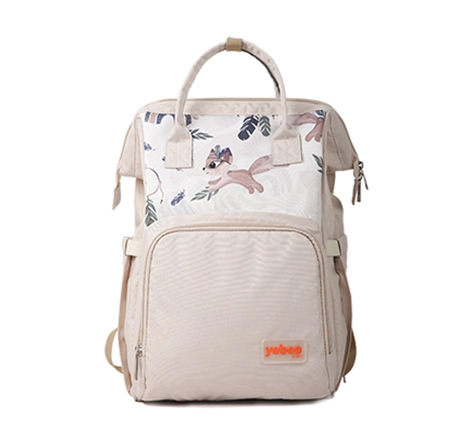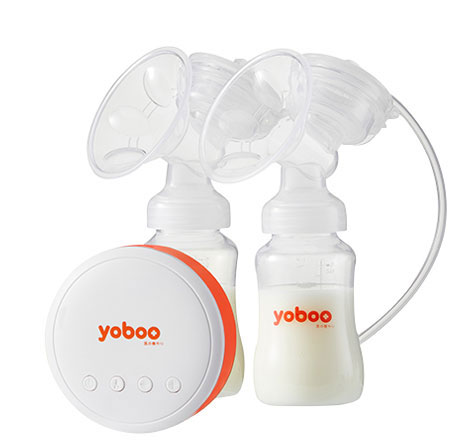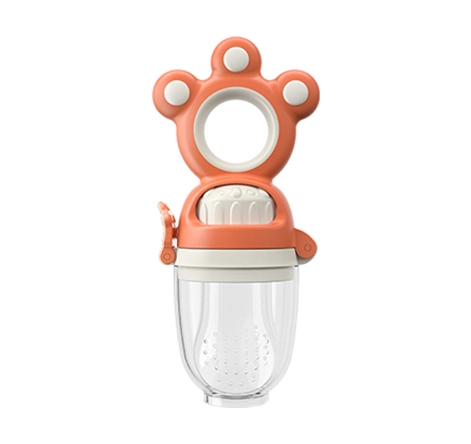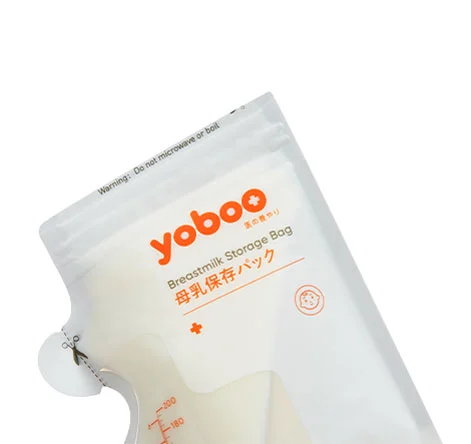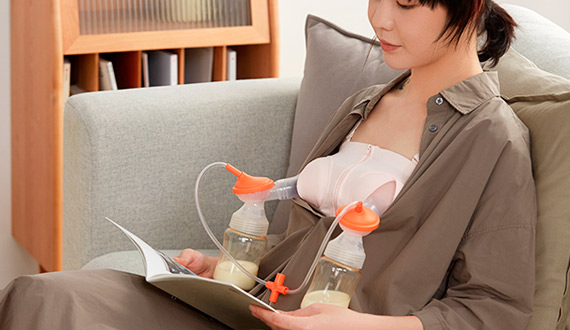The pacifier is a tool that helps babies suck milk by attaching it onto a bottle. Depending on the material, pacifiers can be divided into: silicone pacifiers (transparent appearance) and rubber pacifiers (yellow appearance with a high sulfur content). Silicone pacifiers are further divided into solid silicone pacifiers and liquid silicone pacifiers. Liquid silicone pacifiers are more transparent and softer than solid silicone, and are currently the most commonly used pacifier material. So what material is best for pacifiers? Currently, most pacifiers on the market are made of silicone, and some are made of rubber. Compared to rubber pacifiers, silicone pacifiers are closer to a mother's nipple, with a moderate softness that can promote baby's saliva secretion and help with the development of the jaw, facial muscles, and make them easier for babies to accept.
The pacifier's nipple openings are also different, some are cross-shaped, some are round, and some products have designed pacifiers with one, two, or three openings based on the principle of a mother's milk flow. Therefore, the pacifier should be chosen according to the child's age. Round-nipple pacifiers are suitable for newborns, as the milk can flow out automatically, with a lower flow rate. Cross-shaped nipple pacifiers are suitable for babies older than three months, as they can adjust the milk rate based on the baby's sucking strength, and have a larger flow rate. Y-shaped nipple pacifiers are suitable for babies older than three months, with a more stable milk flow, and the Y-shaped opening is not as easy to break as the cross-shaped one. Smaller pacifier openings should be chosen for younger babies. If the pacifier opening is too large, it can cause the baby to choke. For older babies, the sucking ability has increased, so they can choose newborn products with larger openings.
How often should infant pacifiers be replaced?
The pacifier has a shorter lifespan than a bottle, and may be easily damaged due to improper use or disinfection. Even if it is not replaced, bacteria that accumulate on the pacifier can be worrying.
The lifespan of a pacifier. Generally, pacifiers should be replaced after two to three months of use. infant pacifiers are usually made of latex, silicone, rubber, and other materials that can easily become damaged due to disinfection.
Check the size of the pacifier opening, this is easy to judge. When the baby sucks milk, if they suck rapidly for more than 15 minutes, the pacifier opening is too small. At this time, the mother can replace the pacifier or make the opening bigger. If the baby bites the pacifier while drinking milk, the pacifier opening may be too large or the baby is not hungry. Of course, if the baby chokes on milk, it may indicate that the pacifier opening is too large and a smaller pacifier should be chosen.
Check whether the pacifier is damaged. When feeding the baby with a pacifier, the mother should check if the pacifier is damaged each time. If it is damaged, it should be replaced immediately. Damaged pacifiers can be harmful to babies, so mothers should be aware of this.
The correct disinfection method for infant pacifiers
The pacifier is disinfected using a high-temperature method. Rubber infant pacifiers generally have a rubbery odor that is difficult to eliminate and may become deformed at 100°C. Silicone pacifiers can withstand 120°C boiling and are transparent or semi-transparent without any odor.
Boiling water disinfection: Before disinfecting infant pacifiers, the pacifiers must be rinsed with warm water. Then boil the pacifiers in water, and generally boil for two to three minutes after the water boils.
Steaming disinfection: This is currently one of the most effective and practical methods. The pacifiers are steamed in 95°C-97°C steam for 12-15 minutes, which can effectively kill most pathogenic bacteria without damaging the material. Many bottle sterilizers on the market use team disinfection and can sterilize both bottles and pacifiers at the same time.








